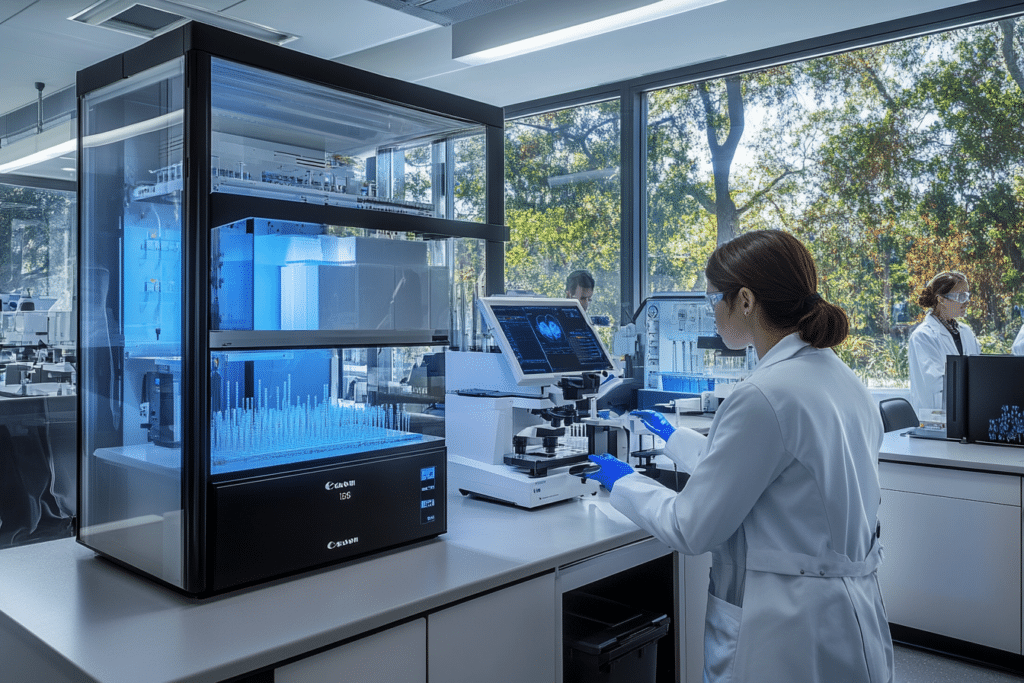Peptides, short chains of amino acids linked by peptide bonds, play crucial roles in biological processes and have become increasingly important in modern medicine. As we delve into the world of peptides, a common question arises: just how many peptides are there? This article explores the diverse landscape of peptides, with a particular focus on those utilized in human medicine and created through biotechnology.
The Peptide Universe: Natural and Synthetic
Peptides occur naturally in all living organisms, from bacteria to humans. In the human body alone, there are countless peptides serving various functions, from hormones like insulin to neurotransmitters and signaling molecules. However, the world of peptides extends far beyond what nature provides.
With advances in biotechnology, scientists can now design and synthesize peptides for therapeutic use. This has led to an explosion in the number of potential peptides, limited only by our imagination and the laws of chemistry.
Biotech-Derived Peptides in Human Medicine
The pharmaceutical industry has recognized the potential of peptides as therapeutic agents. As of 2023, there are over 80 FDA-approved peptide drugs on the market, with many more in clinical trials. These drugs treat a wide range of conditions, from diabetes to cancer.
Synthetic Peptides
Synthetic peptides are created in laboratories using chemical synthesis methods. One notable example is liraglutide, a GLP-1 receptor agonist used to treat type 2 diabetes and obesity. The ability to synthesize peptides has dramatically increased the number of potential therapeutic peptides.
Recombinant Peptides
Recombinant DNA technology allows for the production of peptides in living cells. This method is particularly useful for creating larger, more complex peptides. Insulin was one of the first recombinant peptides produced for medical use, revolutionizing diabetes treatment.
Modified Peptides
Scientists can modify peptides to improve their therapeutic properties. Techniques like PEGylation or lipidation can enhance a peptide’s stability and half-life in the body. These modifications further expand the number of potential therapeutic peptides.
Therapeutic Applications of Biotech-Derived Peptides
The versatility of peptides has led to their use in various therapeutic areas:
Metabolic Disorders
GLP-1 receptor agonists like semaglutide have shown remarkable efficacy in treating type 2 diabetes and obesity.
Oncology
Peptides are being used in cancer therapy and diagnostics. For example, lutathera is a peptide receptor radionuclide therapy for certain types of neuroendocrine tumors.
Cardiovascular Diseases
Peptides like nesiritide are used in the treatment of heart failure.
The Challenge of Quantifying Peptides
While we can estimate the number of FDA-approved peptide drugs, quantifying the total number of peptides is a daunting task. Theoretically, the number of possible peptide combinations is astronomical. For a peptide with just 10 amino acids, there are 20^10 (about 10 trillion) possible combinations, assuming only the 20 standard amino acids are used.
In practice, the number of biologically relevant peptides is much smaller, but still vast. Databases like PeptideAtlas and the Antimicrobial Peptide Database catalog thousands of known peptides, but these represent only a fraction of what likely exists in nature or could be synthesized.
The Future of Peptide Therapeutics
The field of peptide therapeutics is rapidly evolving. Advances in technology are opening up new possibilities:
AI and Computational Design
Artificial intelligence is being used to predict and design new peptides with desired properties, potentially accelerating drug discovery.
Novel Delivery Methods
Innovations in oral peptide delivery are addressing one of the main challenges in peptide therapeutics, potentially expanding the use of peptides in medicine.
Personalized Peptide Therapies
The future may see personalized peptide vaccines tailored to individual patients, particularly in cancer treatment.
What’s Next
So, how many peptides are there? The answer is both simple and complex. While we can count the number of approved peptide drugs or cataloged natural peptides, the potential number of peptides is virtually limitless. As biotechnology continues to advance, we can expect to see an ever-growing number of peptides being discovered, designed, and used in medicine.
The world of peptides represents a vast frontier in drug discovery and development. With each passing year, researchers uncover new peptides and novel applications for existing ones. As we continue to explore this rich landscape, the number of peptides known to science will undoubtedly grow, bringing with it new possibilities for treating disease and improving human health.



